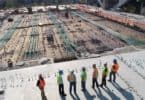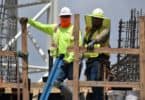Construction project management is difficult and stressful. However, if your project fails to meet quality acceptance criteria, you will not only irritate your stakeholders; you may also face legal action.
Quality means different things to different people, which is why construction quality control is important. It is a quality management system that allows you to define what quality is, track it, and make changes as needed to ensure those benchmarks are met.
What Is Construction Quality Control?
Construction quality control is a management system that ensures the final deliverable meets the client’s standards and guidelines. This includes completing the project within the scope of work and avoiding conflicts throughout the project’s life cycle.
The client, regulatory agencies, and environmental and policy guidelines all define quality. A construction quality management plan documents all of these quality assurance requirements and procedures.
Quality assurance (QA) and quality control (QC) are two aspects of construction quality (QC). Quality assurance establishes the quality management expectations and the means by which quality will be achieved. Quality control is the strategy for achieving it. This quality management plan is driven by the construction quality control manager throughout all phases of the project.
The quality of your construction is controlled by careful monitoring and tracking of your project.
Why Construction Quality Control is Important?
Your project will not be considered a success if your client is unsatisfied. Construction quality control is important because it increases client satisfaction. A satisfied customer is one who will work with you again and even recommend you to others.
In practice, doing quality work means doing less rework. Saving money by not having to redo work that should have been done correctly the first time. This is also a good way to keep your crew’s morale high, which means they’ll work more efficiently.
The most important thing to remember is that construction quality control leads to a successful project. Everything you do in construction project management is dependent on the quality of your work. Focusing on quality means fewer problems and changes, as well as saving time and money.
Construction Quality Control vs. Construction Quality Assurance
It is essential that this agreed-upon set of procedures and standards be followed in order for a project to be completed effectively and without issues, either on-site or later down the road. There can be no room for interpretation when it comes to quality standards and procedures on a construction project, which is why they must be thoroughly understood.
When it comes to quality control for what is used in construction projects and ensuring that items meet high standards, it is critical. Inspections will ensure that all tools, parts, equipment, materials, and machinery are in good working order, are the correct size and quantity, and so on.
Construction companies can use quality control measures to ensure that their projects are completed to the highest standards using the best-performing parts and equipment. A quality assurance plan will ensure that everything runs smoothly throughout the project.
Read also: Top 8 Facts About Quality Management
Quality Control Procedures In Construction
There must be quality control procedures in place when working on construction quality control to bring clarity to the work. Follow these five steps to accomplish quality control procedures in construction:
1.Define What Done Means
This includes completing the project without defects, satisfying code requirements, and adhering to the client’s specifications. Once the conclusion has been defined, share it with your superintendents, crew, subcontractors, and everyone else involved in the construction project plan to ensure everyone is on the same page.
2.Create an Inspection Plan
Inspect the completed work thoroughly to ensure that it meets your quality acceptance criteria. Create an inspection plan to determine what will be inspected and notify the team when it is inspected. Also, whether it’s a member of your crew or a third party, someone must be in charge of carrying out the inspection.
3.Create Quality Control Checklist
Create a quality control checklist to ensure that the inspection process is thorough and that no items are overlooked. Make your points clear. The checklist should be distributed to the crew for pre-task discussions on how to carry out the work. A checklist ensures quality control and communicates to the crew what is important in their tasks.
4.Correct Work
When a task fails to meet the quality management inspection standards, it must be corrected. Mark the work that needs to be fixed (photograph it if necessary), fix the problem, and document the fix to ensure that it now meets your quality standards.
5.Review and Revise
When you discover a deficiency and rectify it, your work isn’t done. Examine what happened and talk with your team about how to avoid it happening again. Whatever the conclusion, it should be shared with the entire construction crew to ensure that the problem does not reoccur elsewhere. Add the new information to your inspection checklist, if applicable.
Read more about Quality Control Procedures In Construction
How to Create a Construction Quality Control Plan?
When creating a construction quality control plan, you must consider a number of factors. Here’s a checklist to make sure you don’t miss any important steps:
1.Quality Control Manager
Choose a quality control manager to lead the effort. The client must understand who this individual is and why they are qualified for the position. The quality manager oversees all quality management activities and is in charge of day-to-day field operations. The quality manager’s responsibilities and how they work with the rest of the crew must be defined in the construction quality control plan.
2.Monitoring
Include monitoring in your construction quality control plan. You must inform your client of your quality control procedures. Determine the frequency of surveillance, as well as how and what you will monitor. This should be specified in the construction quality control plan.
3.Communications
Quality control should be discussed from beginning to end. Quality control should be included in all reports, test results, and inspection data delivered to your client. A communications guideline must be included in your construction quality control plan to explain how and when this communication will take place.
4.Subcontractors and Suppliers
First, inform your client about the suppliers and materials that will be used. Because these are organizations that are not under your control, you must include selection criteria for suppliers and subcontractors in your construction quality control plan. This includes, of course, price, but also whether or not they deliver on the quality you expect.
5.Project Quality Specifications
This is where you gather client specifications and expectations for the finished product’s quality. However, you should go above and beyond their requirements by addressing specifications from building codes and industry standards. Lay everything out so that no one is confused about why the work was done the way it was done.
6.Control of Non-Conformances
No construction project ever goes exactly as planned. When things go wrong, you must have a plan in place to maintain the overall quality of the project. There should also be documentation of these changes and how they were implemented.
7.Inspections and Tests
As part of the overall construction project management of your build, inspect each phase of construction. Test the quality of the materials used or the function of quality management systems. List the inspections and tests you will conduct throughout the construction project’s life cycle, including the forms and test results you will use.
Download Free Construction Quality Control Plan from HERE
Read also: Electrical Construction Quality Control Plan









